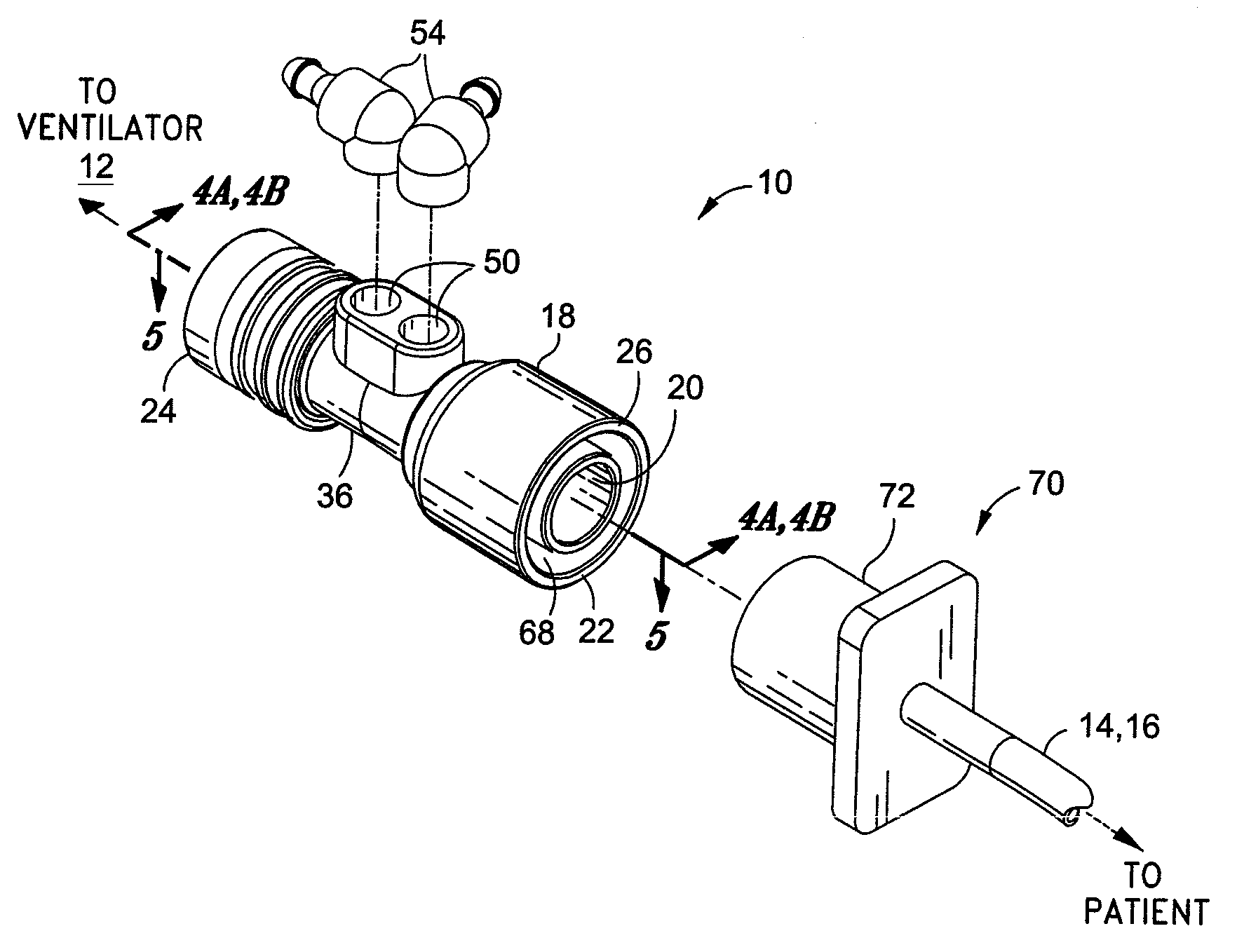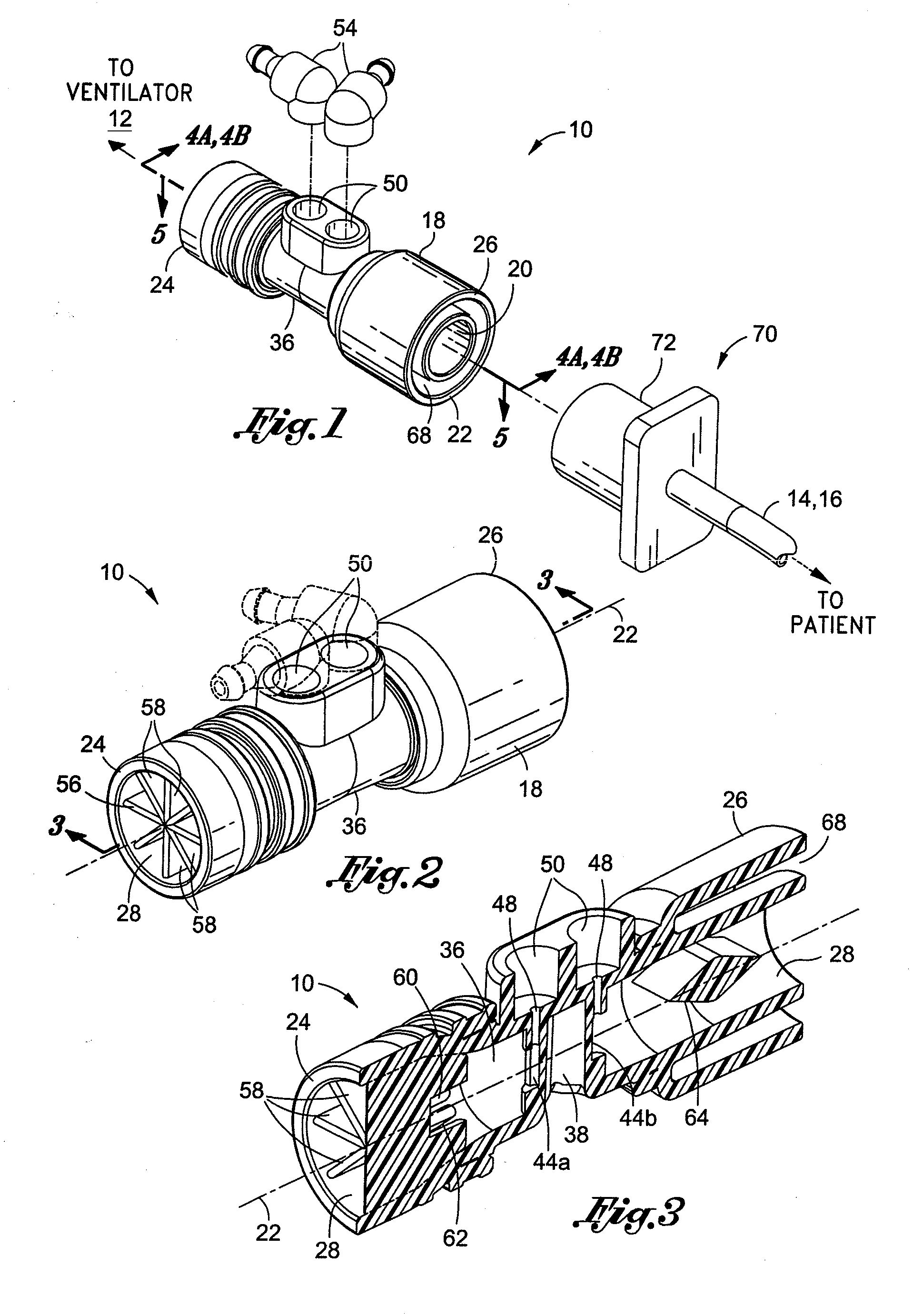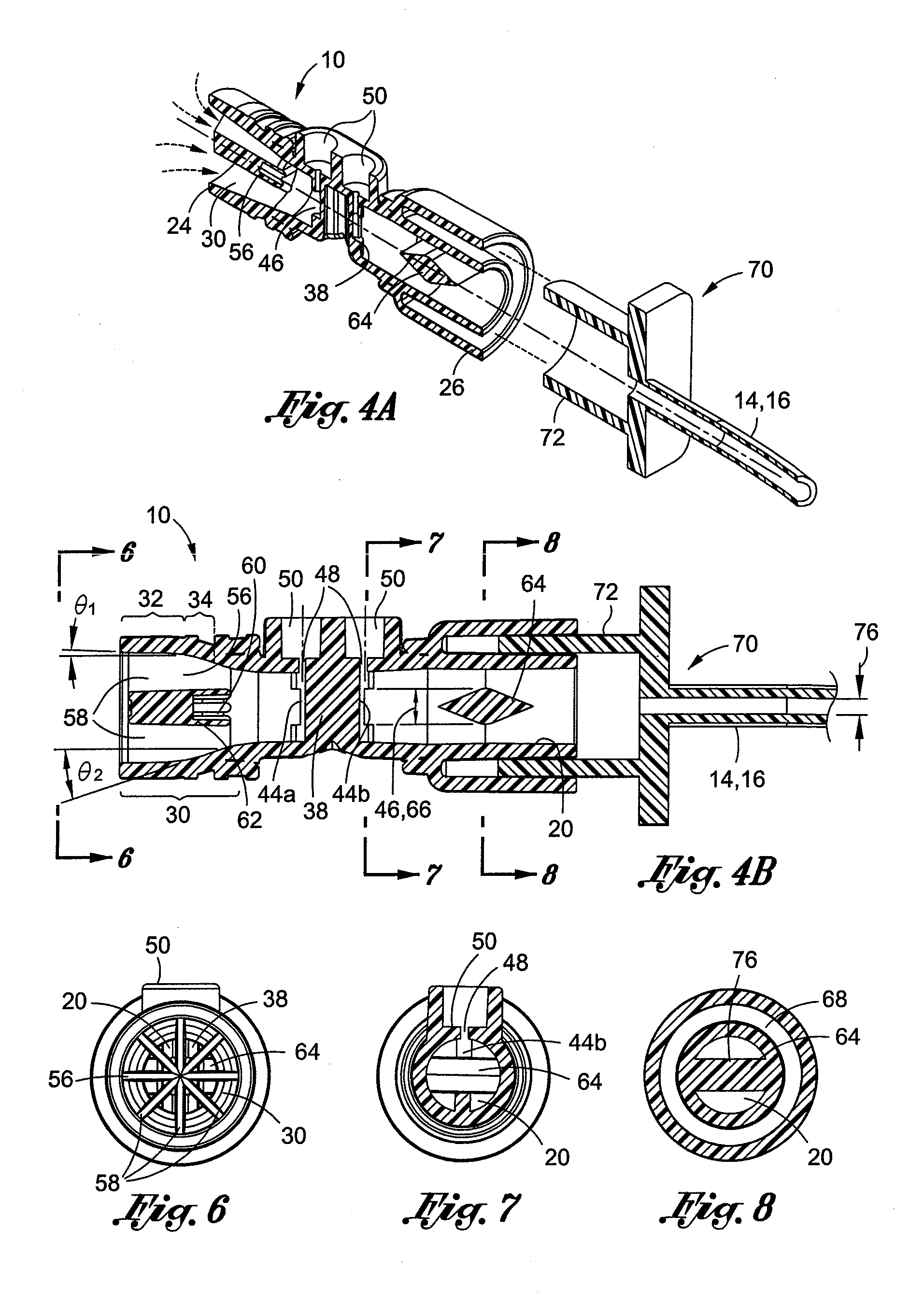Flow sensor
- Summary
- Abstract
- Description
- Claims
- Application Information
AI Technical Summary
Benefits of technology
Problems solved by technology
Method used
Image
Examples
Embodiment Construction
[0037]Referring now to the drawings wherein the showings are for purposes of illustrating preferred embodiments of the present invention and not for purposes of limiting the same, shown in FIGS. 1 and 2 is a perspective view of a bi-directional flow sensor 10 specifically adapted for sensing pressure within a flow passing through the flow sensor 10. The flow sensor 10 is shown as being adapted to be interconnected to a patient tube 14 such as an endotracheal tube 16 which may have a relatively small size (i.e., small inner diameter 76). The adapter 70 is frictionally engageable to the flow sensor 10 such as by insertion of the adapter 70 into an annular groove 68 formed on one end of the flow sensor 10.
[0038]The endotracheal tube 16 may also have a relatively large diameter for use with adults. Alternative configurations of the patient tube 14 may be used with the flow sensor other than endotracheal tubes. Regardless of their specific configuration, the patient tube 14 is adapted to...
PUM
 Login to View More
Login to View More Abstract
Description
Claims
Application Information
 Login to View More
Login to View More - R&D
- Intellectual Property
- Life Sciences
- Materials
- Tech Scout
- Unparalleled Data Quality
- Higher Quality Content
- 60% Fewer Hallucinations
Browse by: Latest US Patents, China's latest patents, Technical Efficacy Thesaurus, Application Domain, Technology Topic, Popular Technical Reports.
© 2025 PatSnap. All rights reserved.Legal|Privacy policy|Modern Slavery Act Transparency Statement|Sitemap|About US| Contact US: help@patsnap.com



